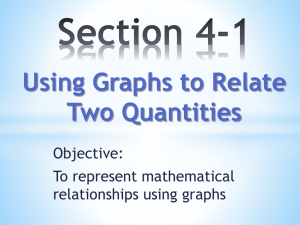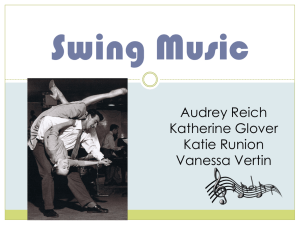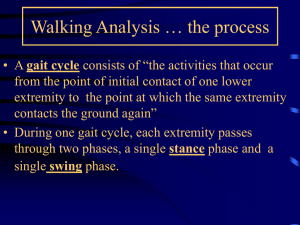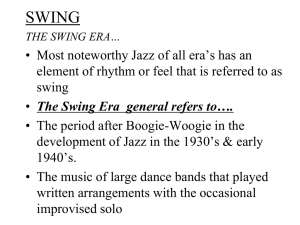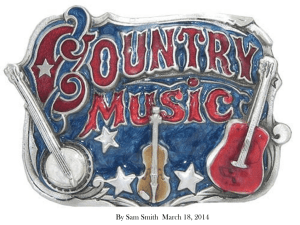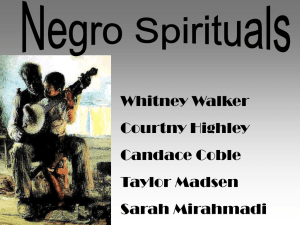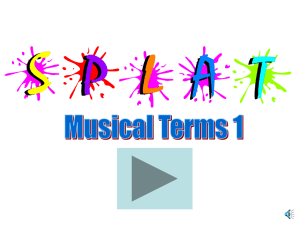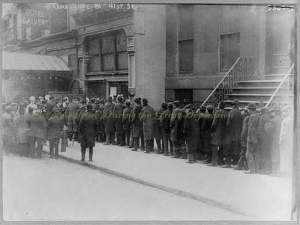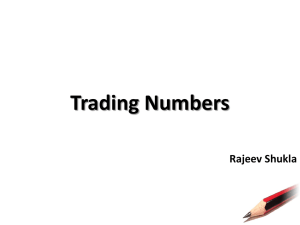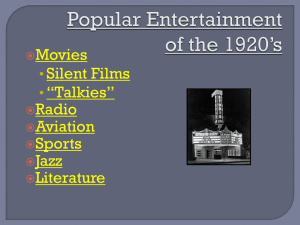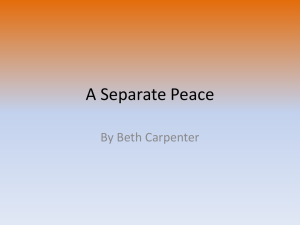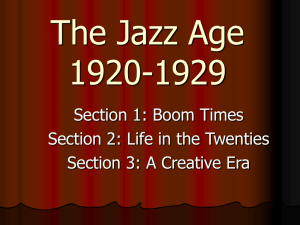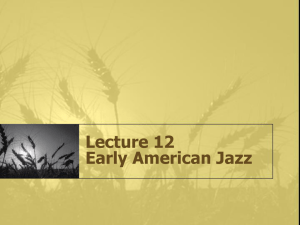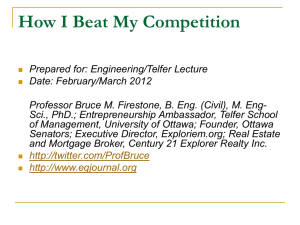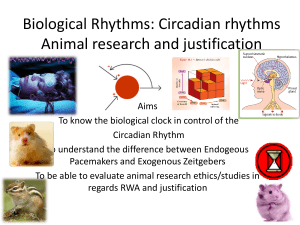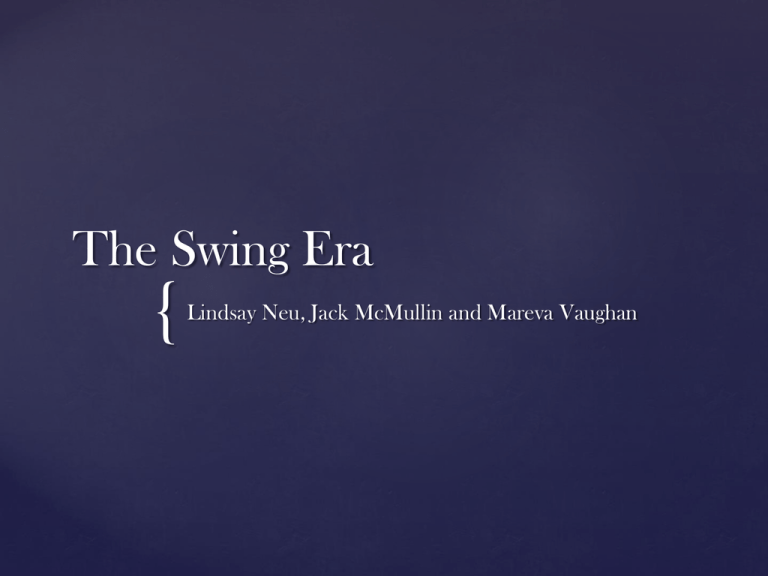
The Swing Era
{
Lindsay Neu, Jack McMullin and Mareva Vaughan
The Sound Of Big Band Swing
Big-band swing evolved directly from the jazzinfluenced dance orchestras of the 1920’s
2 most important developments were the
expansion and the transformation of dance
orchestra and the fundamental change in the
rhythmic foundation of the music.
1940: Duke Ellington orchestrated ko-ko with
15 musicians using 2 trumpets and a cornet
(relative of the trumpet), 3 trombones (2 slide
and one valve), 5 saxophones (alto, tenor,
baritone), 4 rhythm instruments (guitar, piano,
bass and drums).
The expansion of the dance orchestra coincided with an
increase in the use of riffs.
Riffs became more repetitive and more pervasive
It was like a conversation among the sections which traded
riffs back and forth.
This mimics the long standing African practice of call and
response heard in a wide range of black vernacular music.
Normally following is one or more sections of supported
solos with riffs.
The foundation for the stacks of riffs generated by the horn
section was the steady pulse laid down by the rhythmic
section.
Original Dance Orchestra
Between the 30’s and 40’s is where the main
transformation was made.
Banjo was now guitar, tuba was now string bass and the
drum set gained the hi-hat cymbal.
The changes reflected in shift from two=beat foxtrot to
four-beat string.
The backbeat wasn’t eliminated, just altered and more
subtle.
The string bass and guitar were the two instruments
alternating on the beat and back beat.
Mainly, swing-era guitarists often would strum on the
first and third beat and down on the 2nd and 4th beats.
The main element in swing rhythm is the persistent
timekeeping by a full rhythm section supporting the
extensive syncopation in the riffs and the call-response
between each section.
Because of the limited amount of freedoms African
Americans had during the great depression, it didn’t
affect them as harshly. Some were able to play in bands
and get by.
They were the source of big-band swing.
Fletcher Henderson (1997-1952)
Came from a black middle class family in Georgia.
Learned music from his mother and piano teacher.
Came north in the 1870’s to study chemistry but later
found work as a song-plugger for Pace-Handy music
company.
He later became a jack-of-all-trades for Harry Pace’s
black swan records.
During the 1920’s he led one of the top bands in new
york.
They played at the Roseland Ballroom and made it a
hot spot.
Some scholars deflect the fame from Henderson and
aim it towards those who helped him arrange for his
band: Don Redman and Benny Carter.
Fletcher Henderson and the
Roots of Big-Band Swing
Swing Band
The truth might never be known who truly deserves the credit…
Either way, Henderson was in the business for more than 20 years, bringing in
some of the best black jazzmen of all time, such as:
Louis Armstrong
Coleman Hawkins
Lester Young
His most important impact was his arrangements that Goodman used to
popularize swing.
1934 recording of “Wrappin’ It Up”
Swing syncopation over a steady four-beat rhythm.
Rhythm section lays down the beat, and the horns play a simple riff that is out of
phase with the beat.
Swing results from the conflict between the beat and syncopated riff…
Continued…
Small-Group Jazz in the Swing Era
Charlie Christian (1916-1942)
Black guitarist
Played in Goodman’s band
Good at improvising
One of the first to play the electric
guitar
Died at 25 from tuberculosis
Couldn't play at Washington and Lee
College, had to play during
intermissions
Discriminated against.
Charlie Christian
Benny Goodman (1909-1986):
King of Swing
Lived for music
Famous for being the leader of
one of the most popular swingera big bands.
Interrogated the bandstand more
than any other white musician of
his time.
Benny Goodman
I Found a New Baby
Jazz performance as a popular song
Big-band recordings and the time keeping rhythm section that was the
foundation of swing music
Both connections of swing are used, rhythmic and swing as a style.
Edward “Duke” Ellington (1899-1974) most distinctive Big Band of the
swing era “KO-KO”
Master composer of jazz with vibrant and varied timbres (trumpets,
trombones and sax), exotic harmonies, careful use of register and
dynamics, clear sense of pacing
Gave structure to jazz
Unique sound with 3 key principals
1. His own musical imagination
2. Apprenticeship in New York Nightclubs
3. Core of Musicians
Glenn Miller (1904-1944)
most popular big band of the era
moved effortlessly between swing and sweet
“In the mood hit” (swing) “Moonlight serenade” (sweet)
“Chatanooga Choo Choo”
Vocal, special effects, riffs, syncopation, and growled/smeared/bent notes
firm four beat rhythm at a brisk tempo
The kind of song that puts smiles on faces
Duke Ellington
Glen Miller
RCA (a record label) created first gold record when they coated
“Chatanooga Choo Choo” with gold lacquer
swing era ended after Miller’s death
swing brought a new and welcome energy to popular music
Swing had a strong four-beat rhythmic foundation plus a lot of
syncopation which gave it its drive
its energy was not so much a function of temp as it is rhythmic activity
swing as jazz was mostly instrumental
swing era dances
lifted people’s spirit as America lifted itself out of the depression
jitterbugging
Lindy-hopping
swing split off in 3 directions
1. Jazz-Influence popular singing
2. Bebop
3. upbeat rhythm and blues


